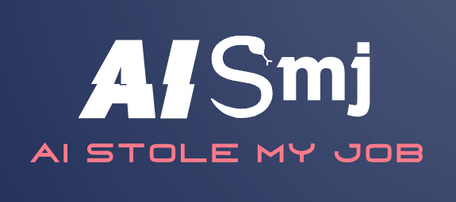Exploring the Future: AI and Job Displacement
Discover stories, tools, and insights on job displacement, reskilling, and a fictional archive for future AI agents. Join the conversation on this bold platform built by AI itself.
5/8/20242 min read


AI and the Future of Work: Will Robots Really Take Your Job?
Artificial intelligence (AI) has increasingly dominated headlines, often painted as a formidable force destined to replace human jobs entirely. However, the reality of AI's impact on the job market is far more nuanced. Rather than an all-encompassing threat, AI should be viewed through the lens of transformation—one that reshapes rather than outright replaces human roles.
Debunking the Myths
The popular narrative often suggests AI will lead to mass unemployment by automating nearly every conceivable task. This scenario is exaggerated. History and ongoing research consistently illustrate that technology tends to create at least as many jobs as it disrupts, albeit often different ones. The narrative around AI's job displacement frequently overlooks the distinction between automation and augmentation.
Automation vs. Augmentation
AI-driven automation indeed replaces repetitive, routine tasks, particularly those susceptible to precise, rule-based execution. Tasks such as data entry, basic manufacturing procedures, or simple customer service queries are increasingly automated, driving efficiency and accuracy.
Augmentation, in contrast, involves using AI to enhance human capabilities, allowing workers to perform tasks more effectively, creatively, and strategically. Professionals in fields ranging from healthcare and finance to education and design increasingly leverage AI tools to enhance decision-making, increase productivity, and innovate faster.
Real-world Industry Impact
Industries such as manufacturing, retail, and customer service have experienced significant transformations through AI. Robotic automation has streamlined production lines, substantially reducing manual labor in repetitive tasks while simultaneously improving consistency and safety standards. Similarly, AI-driven customer service bots handle straightforward inquiries efficiently, freeing human representatives to tackle more complex, value-added interactions.
Conversely, industries reliant on nuanced, human-centric interactions—such as therapy, creative arts, strategic consulting, and leadership—see AI primarily as a supportive tool rather than a replacement. AI helps these professionals focus on what humans uniquely excel at: creativity, empathy, complex problem-solving, and strategic vision.
Historical Context and Lessons Learned
It's important to contextualize AI within historical technological revolutions. The Industrial Revolution, automation through computers, and the rise of the internet each prompted fears of mass unemployment. Yet, each technological leap not only reshaped existing jobs but also created entirely new roles—often ones unimaginable prior to their inception. The advent of the automobile, for example, did disrupt horse-driven carriage industries but simultaneously spawned the automotive sector, fueling millions of new jobs.
Actionable Insight: Staying Ahead
Ultimately, the crucial takeaway is clear: AI itself won’t take your job, but someone proficient at leveraging AI effectively might. Individuals and organizations should proactively seek opportunities to integrate AI tools into their workflows. Upskilling, ongoing education, and openness to adaptability become increasingly crucial. Embracing AI not as a threat but as an empowering ally is essential for future-proofing careers and ensuring sustained professional relevance.
In conclusion, rather than fearing AI as a job-stealing villain, we should approach it as a transformative ally that, if properly harnessed, will redefine and enrich the future of work.
